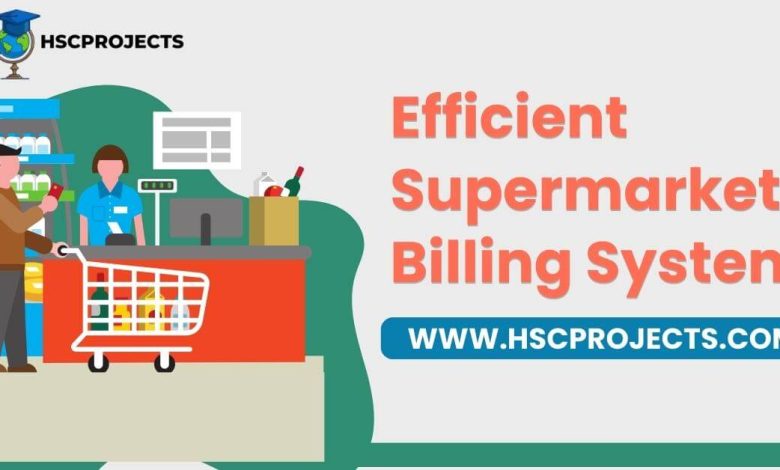
Efficient Supermarket Billing System
The Evolution of Supermarket Billing
In the age of digital transformation, even the traditional supermarket billing system has undergone significant upgrades. With the primary goal of enhancing customer experience and streamlining operations, modern supermarkets are now leveraging technology to ensure fast and accurate billing.
Core Features of the Modern Supermarket Billing System
Built on a robust SQL database and an intuitive front-end interface designed in Asp.net, the system is equipped to handle vast product data, from names to prices. When a product is billed:
- It’s swiftly searched in the database.
- The price, based on quantity, is added to the bill.
- Applicable discounts are automatically applied, ensuring customers always get the best deals.
Advanced Integrations for the Future of Billing
- RFID Tagging: By integrating RFID technology, products can be scanned directly, automatically adding their data to the system. This not only speeds up the billing process but also reduces human errors.
- SMS Bill Notification: In an era where everything is on-the-go, customers can receive instant bill notifications via SMS, ensuring transparency and convenience.

Advantages of the Supermarket Billing System:
- Efficiency: Drastically reduces manual effort, especially for extensive product lists.
- Eco-friendly: Eliminates the need for paper bills, contributing to sustainability.
- Accuracy: Ensures faultless billing calculations with an intuitive GUI.
- Time-saving: Rapid product detection and price calculation.
- User-friendly: Designed with both employees and customers in mind.
- Instant Notifications: Electronic bills can be sent directly to customers via email.
Limitations:
While the system offers numerous advantages, it does come with certain limitations:
- The need for a comprehensive database.
- Potential issues with product tracking if the RFID tag is damaged.
In conclusion, the modern supermarket billing system, with its technological integrations, is revolutionizing the shopping experience, making it more efficient, transparent, and customer-centric.
Sample Code
class Product:
def __init__(self, product_id, name, price):
self.product_id = product_id
self.name = name
self.price = price
class SuperMarket:
def __init__(self):
self.products = {}
self.cart = {}
self.total = 0
def add_product(self, product):
self.products[product.product_id] = product
def add_to_cart(self, product_id, quantity):
if product_id in self.products:
self.cart[product_id] = self.cart.get(product_id, 0) + quantity
self.total += self.products[product_id].price * quantity
else:
print("Product not found!")
def apply_discount(self, percentage):
self.total -= (self.total * percentage) / 100
def generate_bill(self):
print("Billing Details:")
for product_id, quantity in self.cart.items():
product = self.products[product_id]
print(f"{product.name} - {quantity} - {product.price * quantity}")
print(f"Total: {self.total}")
if __name__ == "__main__":
supermarket = SuperMarket()
# Adding products
product1 = Product(1, "Milk", 50)
product2 = Product(2, "Bread", 30)
supermarket.add_product(product1)
supermarket.add_product(product2)
# Adding items to cart
supermarket.add_to_cart(1, 2) # 2 Milks
supermarket.add_to_cart(2, 1) # 1 Bread
# Applying a 10% discount
supermarket.apply_discount(10)
# Generating bill
supermarket.generate_bill()
In order to download the PDF, You must follow on Youtube. Once done, Click on Submit
Subscribed? Click on Confirm
Download Efficient Supermarket Billing System PDF






